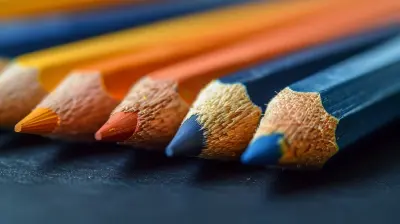Using Reflective Teaching to Improve Classroom Practices
26 July 2025
Teaching is an art, a constantly evolving journey where educators strive to meet their students' diverse needs. But how do you know if your teaching methods are effective? How do you ensure that your classroom practices are genuinely helping students learn and grow? This is where reflective teaching comes into play.
Reflective teaching is like looking in a mirror—not just to see how you look but to analyze and improve. It involves continuously assessing your teaching strategies and making adjustments to enhance student learning. Let’s dive into how reflective teaching can transform your classroom and make you a more effective educator.

What Is Reflective Teaching?
Simply put, reflective teaching is the process of self-examination and continuous improvement in teaching. It requires educators to step back, evaluate their methods, and make informed changes based on observations, student feedback, and self-reflection.Instead of going through the motions, reflective teachers actively think about what works, what doesn’t, and why. They ask themselves questions like:
- Were my students actively engaged today?
- Did the lesson meet its learning objectives?
- How could I explain this concept more effectively?
This practice transforms teaching from a routine task into a dynamic, intentional process that adapts to students' needs.

Why Reflective Teaching Matters
Teachers often juggle multiple responsibilities—lesson planning, grading, classroom management, and more. With such a packed schedule, self-reflection might seem like just another time-consuming task. However, making reflective teaching a habit has long-term benefits that outweigh the effort.1. Enhances Student Learning
When you reflect on your teaching, you identify gaps in students' understanding and adjust your lessons accordingly. This ensures students grasp concepts more effectively and stay engaged throughout the learning process.2. Encourages Professional Growth
No teacher is perfect, and there’s always room for improvement. Reflective teaching promotes a growth mindset, helping educators refine their strategies and develop new skills over time.3. Improves Classroom Management
By analyzing past experiences, you can recognize patterns in student behavior and refine your classroom management techniques. You’ll start to see what works best for maintaining discipline, encouraging participation, and fostering a positive learning environment.4. Boosts Teacher Satisfaction
Teaching can be challenging, especially when students struggle or lessons don’t go as planned. Regular reflection helps you recognize victories—even the small ones—and makes your job more fulfilling.
How to Implement Reflective Teaching in Your Classroom
Reflective teaching doesn’t require hours of extra work. Simple strategies can help you incorporate it into your daily routine.1. Keep a Teaching Journal
Writing down your thoughts after each class can work wonders. What went well? What didn’t? Were students engaged? Did they understand the lesson? A journal helps you track your progress and identify trends over time.2. Gather Student Feedback
Who better to tell you if a lesson was effective than your students? Use anonymous surveys or quick exit tickets to gather feedback about what they enjoyed or found confusing. This gives you a clearer picture of their needs.3. Record Your Lessons
Recording your lessons—whether audio or video—allows you to experience your teaching from a student's perspective. You might notice things you hadn’t before, such as tone of voice, pacing, or classroom dynamics.4. Seek Peer Observations
Ask a fellow teacher to sit in on your class and provide honest feedback. Sometimes, an outside perspective can highlight strengths and weaknesses you may have overlooked.5. Engage in Self-Questioning
After each class, take a few moments to ask yourself reflective questions:- Did my students understand the lesson?
- Was the class atmosphere positive and engaging?
- If I could redo this lesson, what would I change?
6. Stay Updated with Professional Development
Attending workshops, reading educational research, and discussing with colleagues can introduce you to new teaching strategies. Reflection combined with continuous learning leads to meaningful improvements in the classroom.
Common Challenges in Reflective Teaching
Like any good habit, reflective teaching comes with its challenges. But recognizing them can help you overcome obstacles and maintain consistency.1. Lack of Time
With heavy workloads, finding time for reflection might seem difficult. However, even five minutes of self-reflection after class can bring valuable insights.2. Fear of Criticism
No one likes hearing they could do better, even from themselves. But remember, reflection isn't about self-criticism—it's about growth. Shifting your mindset can make self-assessment feel more rewarding than discouraging.3. Resistance to Change
If you've been teaching a certain way for years, change can feel uncomfortable. However, small, gradual adjustments can make a big difference without overwhelming you.Real-Life Example of Reflective Teaching
Meet Sarah, a high school English teacher. She noticed her students were struggling with literary analysis. Instead of blaming them for not paying attention, she decided to reflect on her teaching methods.She started keeping a journal and experimented with different approaches—using visual aids, group discussions, and interactive activities. Over time, she found that breaking down complex ideas into smaller, relatable concepts worked best.
By reflecting and adjusting, Sarah transformed her classroom into an engaging learning environment where students felt confident tackling literary analysis.
Final Thoughts
Reflective teaching isn’t about reinventing the wheel—it’s about fine-tuning your approach to enhance student learning and personal growth. By regularly assessing your methods, gathering feedback, and making small adjustments, you can significantly improve your classroom practices.So, the next time you teach a lesson, take a few moments to reflect. What worked? What didn’t? How can you improve? The answers to these questions will pave the way for better teaching and better learning.
all images in this post were generated using AI tools
Category:
Teacher TrainingAuthor:

Zoe McKay
Discussion
rate this article
1 comments
Kason Ruiz
What specific techniques have proven most effective in reflective teaching, and how can educators best implement them to enhance learning outcomes?
August 24, 2025 at 3:50 AM

Zoe McKay
Effective techniques in reflective teaching include journaling, peer observations, and self-assessment. Educators can implement these by regularly setting aside time for reflection, collaborating with colleagues for feedback, and using structured tools to evaluate their teaching practices, ultimately leading to improved learning outcomes.


